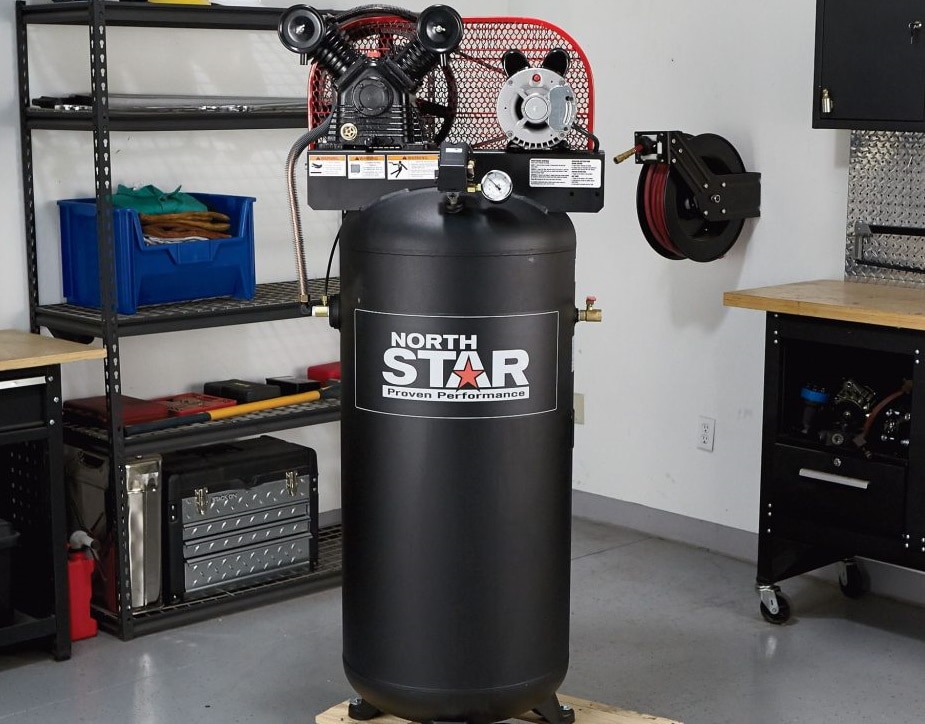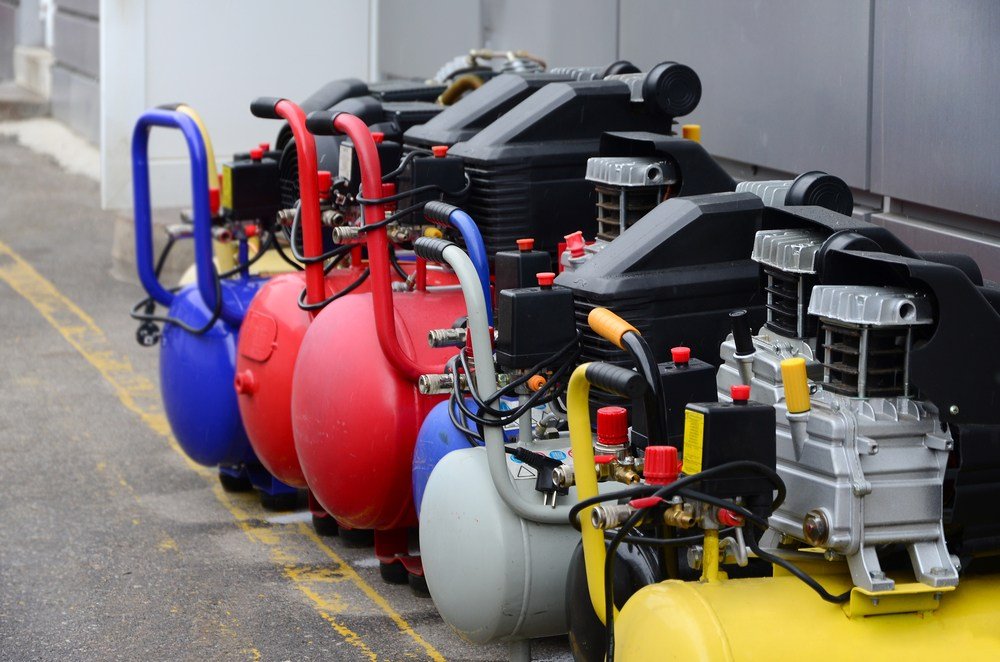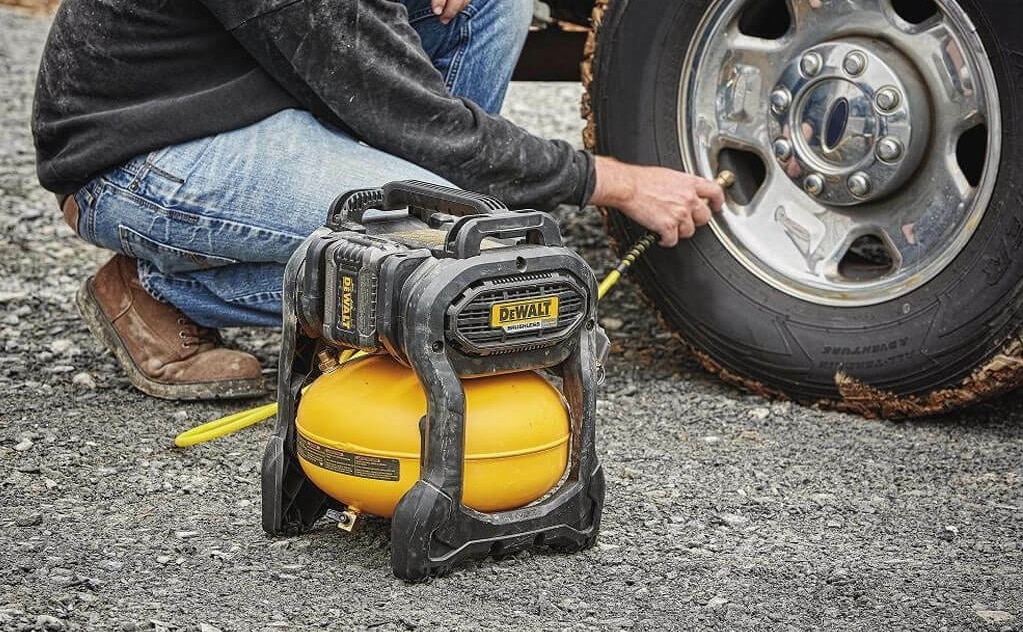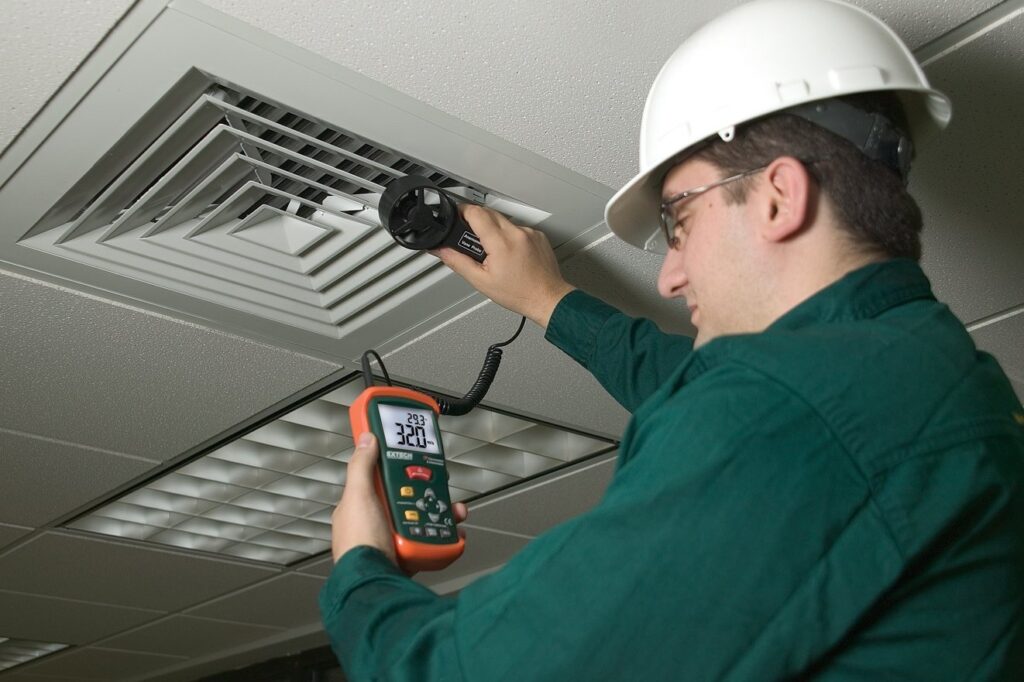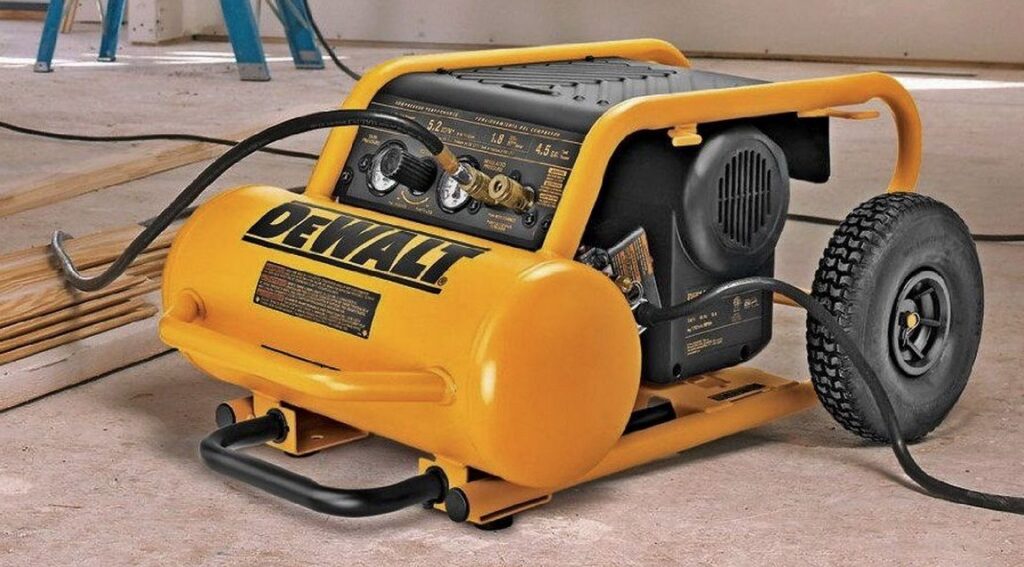Flat tires are common! Over 80% of Americans say they have experienced flat ties at one point in time. But as common as this experience is, not many people know how to fix this problem. According to statistics, over 60% of young-generation Americans can google how to use air compressors for tires but cannot actually do it. Instead of promoting a tire fixing service of some sort, we will show how to save money by using an air compressor.
There are three quick advantages in knowing this process yourself. The first is that you save money – already established. You also help to maintain and practice good tire maintenance. Finally, you save yourself from waiting by the roadside for a tire-changing service provider to get to you. So, are you now convinced that you should know how to fill tires with an air compressor? Then carry on into the guide!
The first step to inflating your car’s tire is to pick the proper tools because it is only with the right tools that you can work efficiently. The tools are divided into three; the tire chuck, regulator, and pressure gauge.

Now that you have gotten your tools ready, the next thing you should do is check the air pressure that’s in the tire currently. For your tire to be flat, means that air has been released from the tire in some way. Though your tire can’t be completely devoid of air, it has in some way reduced from the optimum level of tire pressure. A construction vehicle, usually need about 100 PSI (pounds per square inch). To check your air pressure Trusted Source How Do I Find the Correct Tire Pressure for My Car? | News | Cars.com If you’re wondering why your gas mileage has seemed a little lower than normal lately, or why your steering seems a little sluggish when you’re behind the wheel, or even why your car just seems to be sitting closer to the ground than normal, it’s going to be helpful to start with the only components of your vehicle that should be touching the road: the tires. You might have an issue with inflation. www.cars.com , you need to know one thing – your tire!
Whether you’re using a mower, a trailer, a tractor, a motorbike, a bicycle, or a car, you need to know your tire’s specific requirements to fix a flat tire.
Usually, the optimum pressure level is indicated on the vehicle’s manual so you can check that out and make sure to write it down.
It is best to check your tire’s pressure when it is cold because the temperature can affect your result Trusted Source Temperature Affects Air Pressure Temperature Affects Air Pressure. www.grc.nasa.gov . Since air expands when it is hot, you could think you have reached the PSI when in fact, you haven’t.
Knowing your tire’s pressure will also determine the kind of compressor you would choose. Though all compressors can be tagged as ‘effective and efficient, you need to know if it’s the right one for your needs? If your vehicle is small and requires only about 32 to 36 PSI, portable air compressors might be the best option for you. In the same way, if you want a small compressor to carry around in your car in case of a flat tire, choose a 12V air compressor because they are easy to operate and are just what you need. For pickup trucks, SUVs, and other larger vehicles with up to 100 PSI, you would also need a larger compressor like PORTER-CABLE C2002-WK.
In a situation where your tires are completely flat and you are faced with extremely low pressure in your tires, what should you do? You might think it’s simple – use an air compressor. Isn’t that what you have been learning about since the beginning of this article? Well, what if you don’t have an air compressor on you? – that happens too. In this instance, follow the steps below.
Don’t know how to use air compressors for tires at a gas station? Check below.
Whether you are doing this in your house, by the roadside, or in a gas station, connecting the air compressor involves two steps; preparing the air compressor and filling the tire.
The first thing to do is to bring the compressor close to the tire with lower pressure. If you have more than one flat tire, you would need to move the compressor repeatedly so that it is close to the affected tires. Also, check the tire’s current PSI to know how much more air to add. For a bike tire or any other thinner tire, you might need an adapter, also called a tire chuck. This is because the opening of the air compressor might not fit into the tire’s valve. Remove the tire’s stem cap, and attach the compressor’s hose (with or without the tire chuck – if you need it). Keep the cap on the floor or where it would be easy for you to find it. If you are using an electric compressor, connect it to a power source. For one that works with batteries, turn it on.
The motor should start running now and your tires would begin to get harder. For a completely flat tire, inflating will take some time – up to 5 minutes or more. But if you are filling up about 3 -5 more PSI, you might spend a minute or two. Make sure to check the pressure gauge constantly as you are inflating and never leave the air compressor unattended. If you added too much air, push down on the gauge and that’ll do.
If you have reached the right tire PSI, you can disconnect the air compressor. First, turn off the compressor, then remove the hose and put back the stem cap. Don’t be scared if you hear a hissing sound like air being released from the tire (you should even be worried if you don’t). As long as the stem cap is properly secured, you are good to go. At this point, it is best to return all your tools to the car as they would be needed again in case another similar occurrence happens. By knowing how to use air compressors for bike tires, cars, and other vehicle types, you have saved yourself time, money, and of course your tires.
In this article, we tried to give you a comprehensive guide on how to use an air compressor for tires. The process may seem daunting at first, but we believe that this is a useful skill that will be helpful down the road (pun intended). There’s some learning curve, but as soon as you do it once or twice, you’ll be a pro in no time.

